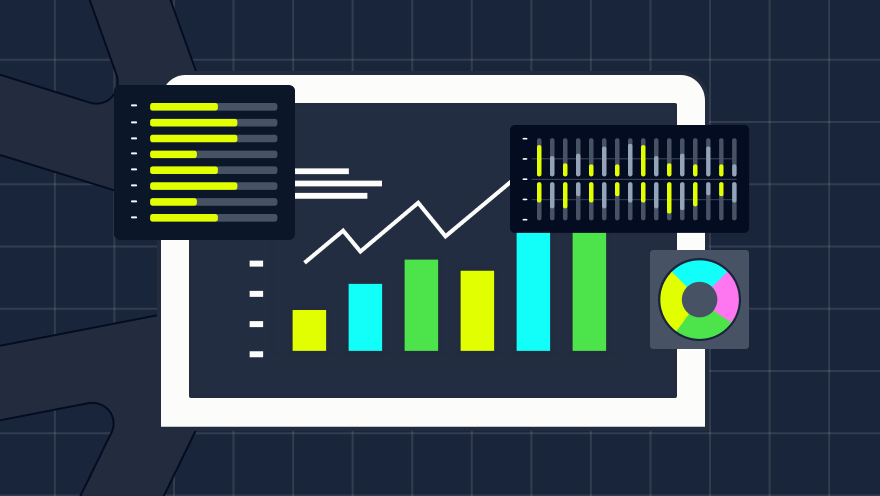Application Performance Monitoring (APM) incorporates telemetry data and monitoring tools to track and manage the performance of business-critical applications. It is widely used in applications to help monitor system availability, reliability, service performance optimization, and response times.
It is crucial for optimizing application performance and presenting clients with an exceptional user experience.
Features of Application Performance Monitoring Tools

1. Real User Monitoring (RUM) – RUM concentrates on monitoring and analyzing user interactions and experiences with the application. It provides invaluable information on application performance in a real-world scenario by recording every user interaction with the system and directly collecting data from the user’s browser to capture load times and application speed.
2. Transaction Tracing – Once the application is in production, transaction tracing is a valuable asset that helps visualize each transaction. It helps identify the dependencies associated with the transactions and detect application errors easily.
3. Error Detection – Most of the APM tools available in the market can provide detailed insights and stack traces, error messages, and other relevant contextual information. Setting up alerts is also essential when monitoring an application to address any possible errors before it causes disturbance to the end user.
4. Performance Analytics – APM tools carry potent features for analyzing application performance and generating meaningful insights. They provide invaluable information regarding performance degradations and bottlenecks through reporting and dashboards that helps distinguish components that require improvements or fixing for performance optimization.
Furthermore, APM tools facilitated developers with scalability and capacity planning, monitoring application dependency usage, infrastructure monitoring, and root cause and impact analysis too.
Importance of Application Performance Monitoring
Optimized performance is an instrumental criterion for a successful application. Application performance monitoring facilitates monitoring of the metrics that impact the application’s performance and helps avoid performance bottlenecks in the long run.
APM enables providing a high-quality and seamless end-user experience with minimal errors, high availability, and maximized response times to improve customer satisfaction.
Not only the customers but also the developers can benefit from comprehensive reports on performance metrics when it comes to mitigating performance issues. To minimize operating costs, APM is necessary for efficient resource and infrastructure allocation planning. Furthermore, the appropriate application of APM yields long-term business benefits and helps deliver a performance-optimized application for the end users, making it an essential piece of product development.
Key Metrics for APM
Several key metrics provide invaluable insights for the performance monitoring and evaluation of an application.
- Response times – Applications take some time to respond to a user request or interaction. This response time is crucial for enterprise applications to ensure that services are supplied to customers without delay.
- Error rates – Error rates track the frequency of application failures and erroneous transactions that negatively impacts the user experience. It records and alerts of these errors when the percentage rate rises above a pre-defined parameter.
- Application uptime and availability – This metric measures whether the application is available and online for customer use. It is instrumental in identifying unprecedented downtime tracking to develop necessary solutions.
- CPU utilization – Monitoring and recording the CPU consumption percentages contributes to identifying potential performance bottlenecks caused by excessive CPU usage and memory demands.
- Requests – This metric helps with performance monitoring by reporting incoming request rates. Anomalies in the number of requests, whether abnormally high or low, are essential for scaling the resources and identifying performance issues.
Benefits of Application Performance Monitoring
Application performance monitoring provides an organization and its IT professionals with a set of key benefits.
- Proactive performance monitoring in real-time helps identify performance bottlenecks, resource limitations, and application errors.
- Fast detection of performance-related errors and anomalies that may result in system failures, leading to efficient error resolution and troubleshooting.
- Helps with quickly identifying the root cause of errors by providing insights such as transaction traces. This, in turn, works in favor of reducing the MTTR (Mean Time To Resolution).
- Monitors the uptime and availability of the system.
- Provides insights for planning and adjusting resource allocations, capacity, and scaling.
- Helps with providing the end-users with an optimized user experience.
However, there can be cases where application performance monitoring is not providing enough support, especially when building cloud-native applications and distributed systems. These challenges can be addressed by using tools like Helios to optimize application performance and productivity.
Best Practice in Application Performance Monitoring
- Select an APM tool that aligns with the nature of the application.
- Focus priority on only the most meaningful metrics for the application.
- Avoid too much unnecessary data. Collect and process the most important data for application performance optimization.
- Take time and review reports generated by the APM tool.
APM Tools
Examples of APM tools include:
- Datadog
- New Relic
- Dynatrace
- Elastic
- ServiceNow
- Helios
What APM is not
APM is not a universal solution for all applications alike. It needs proper tailoring and customization to align with the requirements.
APM is not only infrastructure monitoring. It is involved with monitoring the application’s overall performance, including user interactions, transaction flow, and code executions.
It is not a magic tool for instant performance boosting. APM provides detailed insights and visualizations on the application’s performance, bottlenecks, error rates, and resource utilization. These insights can be appropriately incorporated into the performance optimization process over time.
Application Performance Monitoring vs. Observability
Application performance monitoring (APM) and observability are two terms that are closely aligned in some contexts. The APM domain’s main focus is monitoring an application’s performance and availability using specific metrics. Observability captures a broader area that involves understanding the overall system behaviors, interactions, and dependencies.
Go beyond APM with Helios
Application Performance Monitoring (APM) is a domain of solutions focused on helping DevOps and SRE teams maintain system availability, and optimize the service performance of their production environment.
Though some of the capabilities of APM solutions also address developers’ needs, they do so partially; developers face challenges around building cloud-native and distributed applications that are different from the ones APM is designed to solve. They also appear much earlier than in production. The granularity of the data, as well as the features built on top of it, are not aimed at helping developers with day-to-day tasks such as building new features, reproducing issues, and testing applications.
That’s where Helios comes in. Helios is a dev-first observability platform that helps Dev and Ops teams shorten the time to find and fix issues in distributed applications. Helios is free to use, you can sign up here.












